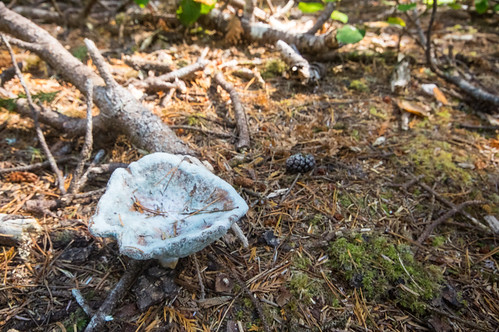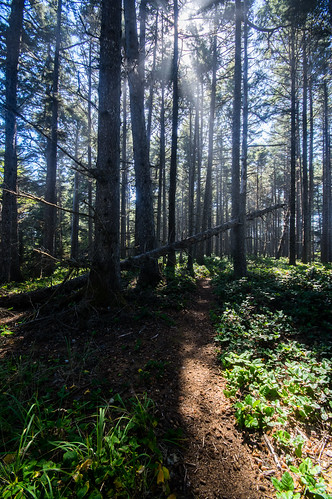BEND — In their first public sparring, Oregon Gov. Kate Brown and Republican gubernatorial candidate Dr. William “Bud” Pierce went head to head on three topics: the economy, land use and the “urban-rural divide.”
The debate was intended to focus on rural Oregon.
Although the candidates agreed that rural communities needed a say in land use issues, better access to healthcare and more jobs, they disagreed on taxes and state expenditures.
“We cannot cut our way toward a better Oregon,” Brown said, summarizing a key difference in messaging between the two campaigns.
Brown reiterated her support for Ballot Measure 97, the proposed tax on certain corporate gross sales receipts, saying that additional investment was needed in basic services, while Pierce said more broadly that promoting prosperous rural economies would have ripple effects in areas such as education and healthcare.
In her opening statement, Brown said her vision for the state encompassed improving educational outcomes, investing in infrastructure and preserving “the beauty and bounty of Oregon.”
She touted her administration’s “progress” in the past year and a half in implementing automatic voter registration and passing legislation to convert Oregon from coal to clean sources of energy.
Pierce’s criticism of Brown began with his opening statement, in which he said Brown was “distant from the people” and seldom visited rural areas. He said he also wanted to address education, and also said improving mental healthcare, the state’s rural economies and homelessness were central to his platform.
The first third of the debate focused around the economy.
Brown, in response to a question about the effects of the increased minimum wage on rural business, defended the state’s mandated minimum wage increases, which will vary by area, saying she would not apologize for advocating for “working families.”
Pierce, asked about recreational marijuana, said the state’s law legalizing recreational marijuana was “well-crafted,” and that he supported local control over regulations. He also said he wished to bring the industry into mainstream banking, saying that a cash-only system was open to corruption.
Brown, in reiterating her support for Measure 97, said that state government needed sufficient revenue for basic services and that large corporations should pay a “fair share.”
Brown, in an interview with Oregon Public Broadcasting last month, acknowledged consumers in Oregon would bear some of the burden should the measure pass. But in Saturday’s debate she said the measure was the only viable option to remedy the state’s projected budget $1.35 billion shortfall. Measure 97 is projected to pull in an additional $6 billion in revenue per budget biennium.
In a rebuttal, Pierce disagreed, citing figures from the Legislative Revenue Office estimating that the average family would pay $600 more annually in costs.
Brown said she sought to improve education and infrastructure in rural areas, and touted the state’s recent investment in “innovative technologies,” citing cross-laminated timber and unmanned aerial vehicles.
In response to a question about shrinking rural economies and populations, Pierce said he wanted to renew natural resource industries in rural areas and support entrepreneurs through incentives such as tax credits or enterprise zones.
In the second part of the debate, which centered on land use, Brown was asked to clarify her stance on the proposed designation of the Owyhee Canyonlands in Eastern Oregon as a national monument.
The incumbent said she supported collaboration in coming to a decision.
Asked to expand on her answer, Brown maintained a “process” needed to be in place for taking public input. She would not say explicitly whether she was for or against the designation.
“I think there needs to be a collaborative approach and parties need to come to the table,” Brown said.
Pierce rebutted that the community around the proposed monument opposes the designation.
“The people who lived on the lands overwhelmingly said no,” Pierce said, and said he opposed what he characterized as an additional layer of bureaucracy.
Pierce and Brown also disagreed more broadly about the federal government’s management of public lands in Oregon. Pierce said that he supported a gradual transfer of federal public lands to state and local agencies, a move Brown called unrealistic.
“I think there’s a third way,” Brown said. She said the state was already cooperating with the federal government, and cited the state’s “good neighbor agreement” with the U.S. Forest Service regarding forest management.
She also attributed what she said was a 15 percent increase in timber harvest off federal public lands in Eastern Oregon in 2015 to such collaborations.
Brown, in a response to a question about easing tensions between various levels of government and the communities they serve, said that she fought on state and federal levels to reimburse Harney County and state law enforcement for costs incurred by the response to the occupation of the Malheur National Wildlife Refuge earlier this year.
While Pierce said that employment and basic healthcare can improve individual health, Brown said Pierce would “kick people off the Oregon Health Plan” and that she sought to remove barriers to healthcare.
“Every time we have a budget cut in this state, we cut people or we cut services,” Brown said.
Pierce objected, noting he was in favor of the recent Medicaid expansion in the state, but that rural communities suffered from a lack of affordable health insurance.
“All the great words in the world from the governor will not provide affordable insurance,” Pierce said.
He said that both health and educational outcomes could be bolstered by improved rural economies.
“If we have prosperity in rural areas, prosperous families can take care of their children,” Pierce said, arguing that rural areas have been neglected by Brown’s administration.
He also emphasized his background as a private citizen in contrast to Brown’s 25 years in state government and said her record was poor in those years.
But Brown said the state needed to continue investing in education to improve outcomes, citing the state’s comparatively short school years and large class sizes. She pointed to her appointment of an education innovation officer, whom she said would provide school districts sufficient resources to allow graduates to have a “plan.”
In response to a question about how far to go when making exceptions for rural communities on state policies. Brown said there were a “number of circumstances” where exceptions were created for different communities based on need — including the tiering of the minimum wage increase and local discretion on recreational marijuana.
She criticized Republicans’ response to the state’s low-carbon fuel standard.
“We put on the table an exemption for rural Oregon, but Republican legislators chose to align with the petroleum industry” and did not heed the wishes of constituents, Brown said.
Asked about how she would balance healthy natural environments in rural communities while allowing rural communities to capitalize on their natural resources, Brown said that climate change was the most significant issue, and that it was “imperative” that the Oregon Department of Forestry and other state agencies have adequate resources to collect data.
Pierce called Brown’s response a “non-answer” and agreed that while climate change was an issue, he supported a “triple aim” of lower carbon emissions, reliable supply of energy and lower costs.
He said he wanted to help industries that rely on water thrive, but also encourage more “judicious use of water.”
Brown, in a counter-response, also called Pierce’s response a non-answer and said that she wanted to preserve the state for future generations.
“I don’t think we want to look like Idaho,” Brown said. “I want us to keep Oregon green.”
Saturday’s debate was moderated by the Oregon chapter of the Society of Professional Journalists, with questions offered by representatives of the East Oregonian, KTVZ-TV, Jefferson Public Radio and the Bend Bulletin
Brown and Pierce are expected to debate again four more times before the Nov. 8 election: On Sept. 30, they will square off before the City Club of Portland.






